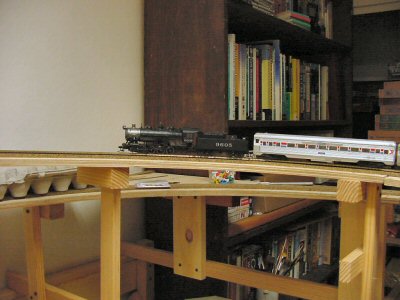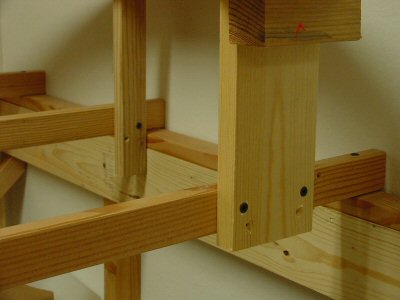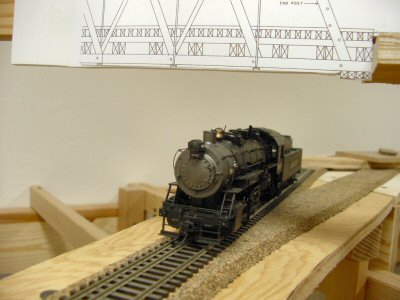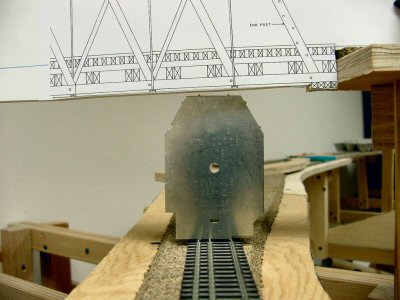Wed 5 Jul 2006
The Hill (Part 1) – Building is Rebuilding
Posted by Daniel Swearingen under Layout Progress , TrackComments Off
So I finally got some track laid up hill from my first turnout. Where have I been? My day job is building a piece of Microsoft’s latest operating system and we had a BIG deadline…
Anyhoo, as soon as I had two whole pieces of flex track down I did what every red-blooded model railroader does: hooked up a power pack and ran some trains!!
The good news: the track is nice and smooth and the one turnout works flawlessly despite obvious imperfections (see other post).

Too Steep
The bad news: I had been worried about the grade uphill from the turnout. On the plan it works out to about 5.8% but that’s with no vertical transitions. With the transitions (effectively the distance it takes for 1/2″ plywood to smoothly bend to the grade) the same height is being gained in less distance — so the real hill is steeper.
Honestly, I knew all this going in, but I had not measured the grade. When I ran a train I found that my thumping Life-Like USRA 0-8-0 swticher could not pull even two free-rolling Athearn 75’ shorty passenger cars up the grade (not that I ever plan on using those cars on my 1920′s layout but they were handy…). Oops. The grade is more like 7%-plus!
I had to lower the grade. Looking at the layout, the height of the grade had been determined by the height needed to clear over the return loop with clearance. I had arbitrarily chosen a pretty high clearance at that point.
However, I needed to reduce the height climbed as much as possible so I made a template based on the Howe truss bridge that will be used at that point and measured how much I could bring the upper track down while still clearing the NMRA recommended height.
I was able to reduce the height by 3/4 of an inch. That may not seem like much but the total climb was 5″ so that’s a 15% reduction. With the reduced grade comes a reduction in the needed vertical transitions so this brings the grade down to more like 6%. Still severe but more workable — and more like what I had planned.
How do you lower twelve feet of roadbed? Unscrew the risers, clamp at the new (lower) height, and re-screw them. Not too pretty but nobody will see this once the scenery is up.

Note that RAISING the track would be MUCH more work.
Can the 0-8-0 get the two cars up the grade now? BARELY. Luckily, my designed train length is four 40′ cars plus a caboose and the prototype NWP often needed doubling on their frequent short-steep hills.

